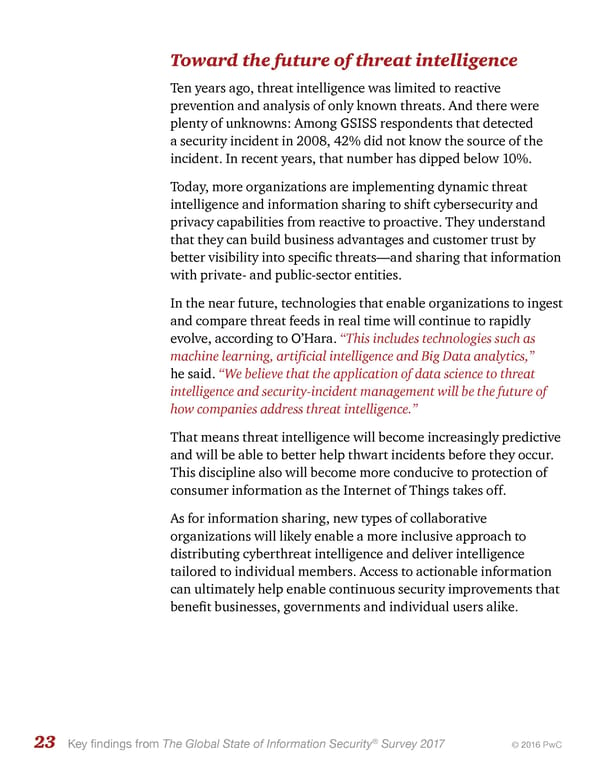Toward the future of threat intelligence Ten years ago, threat intelligence was limited to reactive prevention and analysis of only known threats. And there were plenty of unknowns: Among GSISS respondents that detected a security incident in 2008, 42% did not know the source of the incident. In recent years, that number has dipped below 10%. Today, more organizations are implementing dynamic threat intelligence and information sharing to shift cybersecurity and privacy capabilities from reactive to proactive. They understand that they can build business advantages and customer trust by better visibility into specific threats—and sharing that information with private- and public-sector entities. In the near future, technologies that enable organizations to ingest and compare threat feeds in real time will continue to rapidly evolve, according to O’Hara. “This includes technologies such as machine learning, artificial intelligence and Big Data analytics,” he said. “We believe that the application of data science to threat intelligence and security-incident management will be the future of how companies address threat intelligence .” That means threat intelligence will become increasingly predictive and will be able to better help thwart incidents before they occur. This discipline also will become more conducive to protection of consumer information as the Internet of Things takes off. As for information sharing, new types of collaborative organizations will likely enable a more inclusive approach to distributing cyberthreat intelligence and deliver intelligence tailored to individual members. Access to actionable information can ultimately help enable continuous security improvements that benefit businesses, governments and individual users alike. 23 Key findings from The Global State of Information Security® Survey 2017 © 2016 PwC
 Toward new possibilities in threat management Page 23 Page 25
Toward new possibilities in threat management Page 23 Page 25